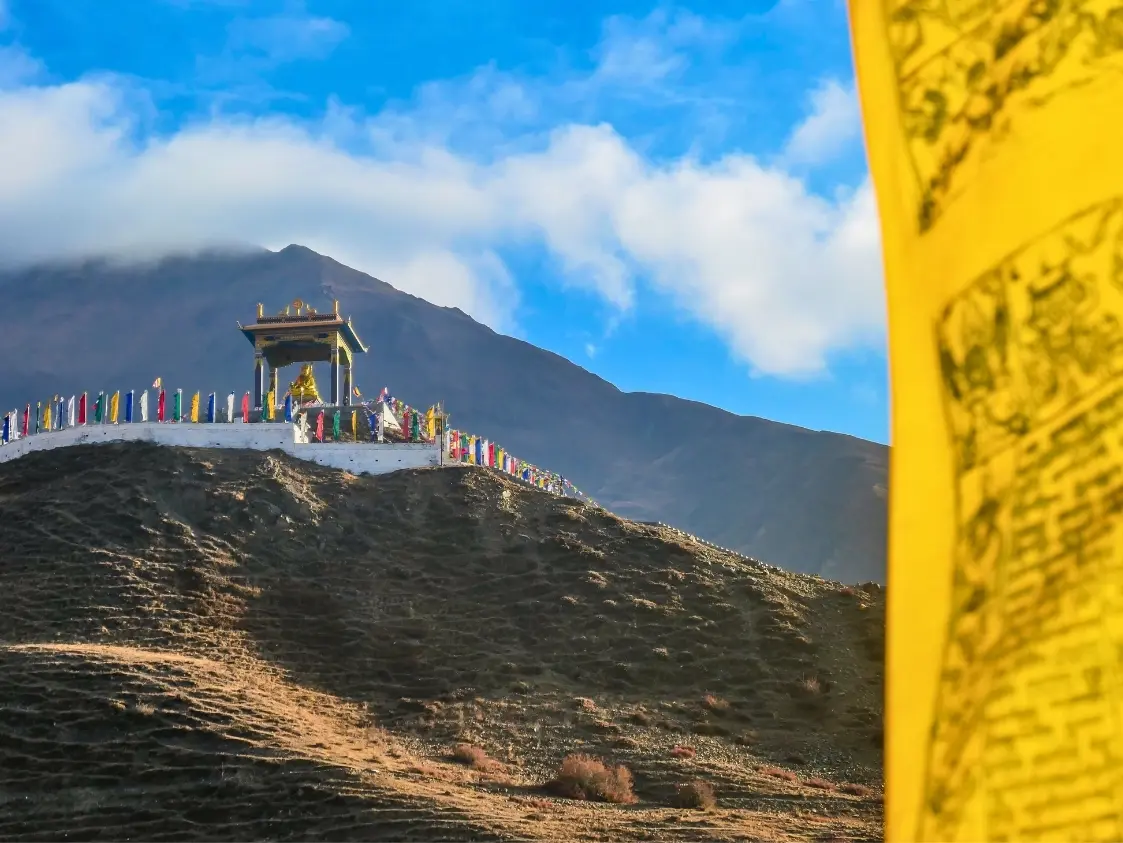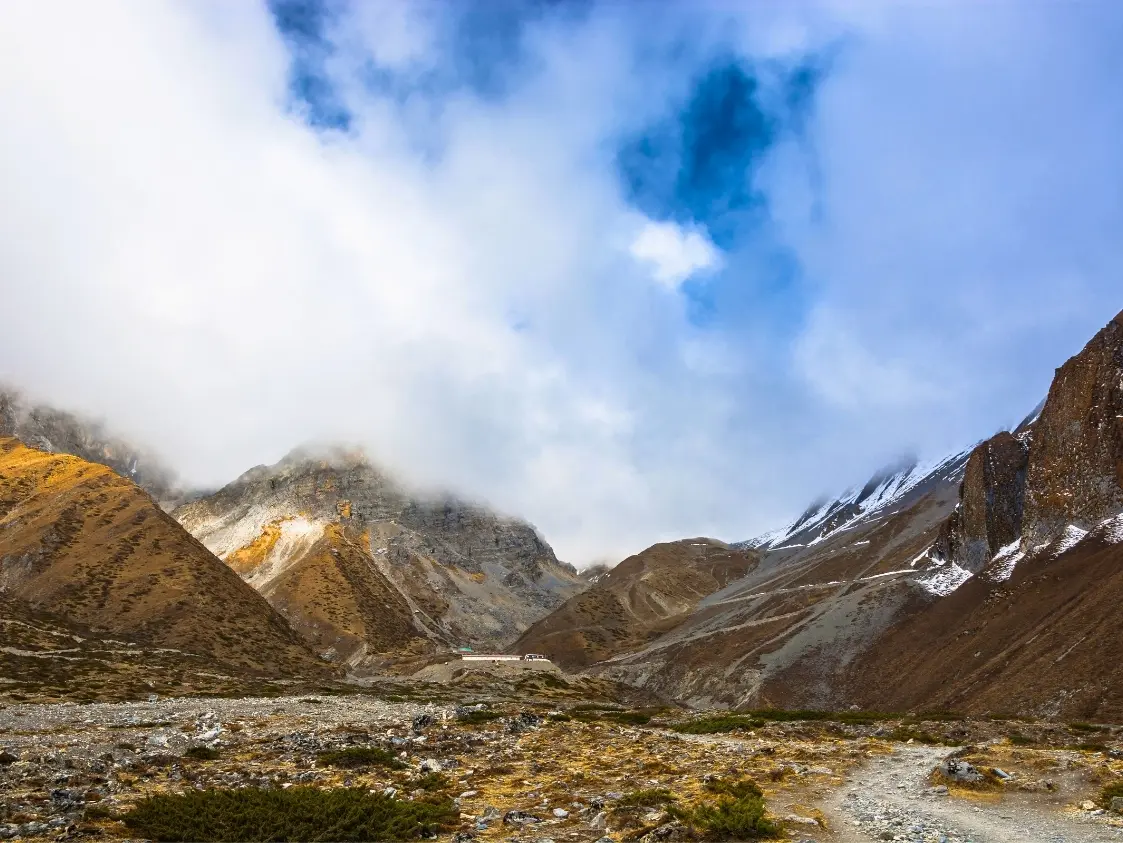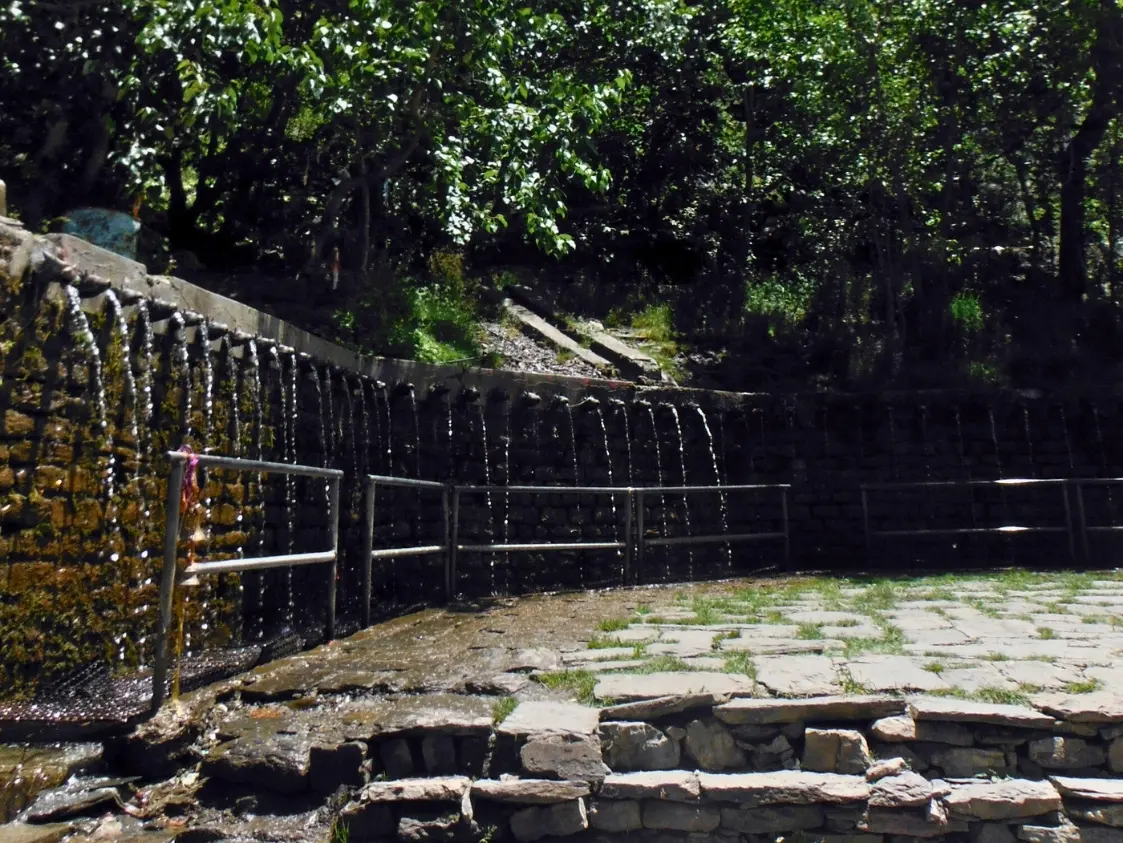Muktinath Yatra—A Pilgrimage That Begins in the Soul
There are some places you mark on a map—and then there are those that mark you. Muktinath belongs to the latter. Tucked away in the barren, wind-brushed valleys of Mustang and standing quietly at an altitude of 3,800 meters, this temple doesn’t shout its presence—it whispers to your spirit.
Muktinath is not just a holy site. It is a threshold. A threshold between life and liberation, between prayer and silence, between the tangible and the eternal. Every path that leads here—whether through mountain roads, sacred rivers, or winding trekking trails—feels less like geography and more like destiny.
The journey isn’t defined by the kilometers you travel, but by the burdens you slowly drop along the way. Worries, pride, regrets—they fall off, unnoticed, like old skin. Because when you walk towards Muktinath, you’re not just walking toward a temple. You’re walking toward something you forgot inside yourself.
In the crisp air of Mustang, where the sky looks closer and the earth feels ancient, time slows down. And in that slowness, something else begins to move—your breath, your awareness, your longing for meaning.
Whether you come seeking salvation, peace, or answers, Muktinath doesn’t promise miracles—it offers presence. The kind of presence that sees your soul even before you offer your prayers.
This is not a tourist trail. This is a Yatra—a sacred journey where the destination is not the end, but the beginning of something profound.

Not Just a Journey—What the Muktinath Yatra Truly Represents
This isn't your average travel tale—it's a sacred unraveling of the self. The Muktinath Yatra is not just about reaching a temple in the Himalayas. It's about walking through layers of belief, shedding burdens, and touching a kind of peace that speaks without words. Here, every step is a prayer, and every mile takes you inward.
Moksha on Earth—The Deeper Meaning of 'Yatra'
A yatra isn’t just a pilgrimage. It’s a personal invitation to pause and purify. To walk not just across mountains, but across memories, habits, and illusions. Muktinath offers a rare chance for moksha—freedom from cycles, from restlessness, from the noise within.
Why Muktinath is Considered the Ultimate Salvation Spot
It’s one of the 108 Divya Desams, sacred to Lord Vishnu, and a site of meditation for Padmasambhava. Hindus and Buddhists alike believe bathing under its 108 stone spouts washes away lifetimes of karma—and lights the path to freedom.
The Only Temple Revered by Hindus and Buddhists Alike
Here, unity lives in silence. A Buddhist nun and a Hindu priest may worship side by side—and both feel at home. The eternal flame inside burns beyond religion. It simply is—like truth.
From Kathmandu to Kali Gandaki—The Symbolism in the Route
The journey begins in Kathmandu’s chaos, flows through Pokhara’s peace, and ends in Mustang’s stillness. Each stop reflects an inner shift—from outer noise to inner calm.
Every Stop Has a Story—Manakamana, Pokhara, Jomsom
- Manakamana: Wish-fulfilling start
- Pokhara: Rest, reflection, beauty
- Jomsom: Harsh, raw, humbling. The gateway to grace.
The Fossil River and Shaligrams—Nature’s Sacred Offerings
The Kali Gandaki River offers Shaligram stones—fossils worshipped as Lord Vishnu. You don’t pick them—they find you when you're ready to carry them with reverence.
Routes to the Divine—Multiple Ways to Embark on the Muktinath Yatra

No two pilgrims walk the same road, yet all reach the same truth. Whether by air, jeep, or foot, the path to Muktinath is lined not just with mountains—but with moments that mold you. Choose your route based on your readiness—not just of body, but of spirit.
Flight and Faith—Helicopter and Air Routes
For those short on time or unable to trek, Muktinath by air offers a serene yet swift option. From Pokhara, regular flights take you to Jomsom, from where a short drive or pony ride brings you to the temple.
Some pilgrims opt for direct helicopter charters—an expensive but breathtaking route, offering views of the snow-capped Annapurna and Nilgiri ranges. While it skips the physical challenges, the inner stillness remains.
Pokhara to Muktinath by Air—Fast Track to the Divine
This route is ideal for elderly pilgrims and time-bound travelers. The short 15–20-minute flight to Jomsom avoids rugged roads and allows for a calm ascent.
What You’ll See from the Sky—Aerial View of the Annapurna Circuit
The landscape unfolds like scripture—terraced hills, deep gorges, and majestic peaks reminding you that this is no ordinary route. It’s a spiritual geography from above.
Road Pilgrimage—The Land of Hairpin Prayers
If you love slow, reflective travel, the road trip to Muktinath is deeply rewarding. The journey via Kathmandu → Pokhara → Tatopani → Jomsom → Muktinath is long, bumpy, and full of life.
Every turn feels like a mantra, every dust trail a test of devotion. Shared jeeps are commonly used, and while the ride can be tiring, the reward is always worth it.
Kathmandu–Pokhara–Jomsom Jeep Yatra—The Offbeat Adventure
This overland yatra spans changing landscapes—from city chaos to river valleys to lunar-like deserts of Mustang. For group pilgrims, it’s economical and immersive.
Acclimatization Tips and Altitude Readiness
Stay one night in Jomsom or Kagbeni before ascending to Muktinath. Hydrate well, eat light, and avoid rushing—altitude can sneak up without warning.
Spiritual Trekking—For the Devotee with Endurance
Trekking to Muktinath is a test of body and spirit. Starting from Nayapul or Ghorepani, the trail passes through lush forests, rhododendron valleys, and hot springs before reaching Mustang. It’s not for everyone, but for some, it’s the purest path.
Ghorepani–Tatopani–Muktinath Trail—The Path of Purification
This multi-day trek blends spiritual discipline with nature’s raw beauty. Many say they found their answers not at the temple, but on the trail.
Mustang Wind Valleys and Hidden Monasteries
The mystical wind corridors of Mustang are home to ancient caves and hidden monasteries. The silence here is heavy—like the voice of the divine waiting to be heard.
Sacred Spots Along the Yatra—More Than Just the Temple
The spiritual gravity of Muktinath doesn’t come from a single shrine—it comes from a sacred ecosystem. Every corner, every element here carries centuries of devotion, myth, and transformation. Let’s walk through the sanctified highlights that await every pilgrim.
108 Dhara—The Coldest Blessing You'll Ever Receive
Imagine standing in a row of water streams flowing from ancient cow-headed spouts. You close your eyes, shiver, and let each drop wash away something you didn’t even know you were carrying. These 108 stone taps, fed by glacial water, represent the sacred number of wholeness. Bathing here is not just a ritual—it’s release.
Ritual Bathing and the Symbolism of Cleansing Karma
Each spout is said to cleanse one worldly sin. Pilgrims bathe in silence, seeking not comfort but clarity—welcoming the cold as a gateway to warmth within.
Health Warnings and Spiritual Etiquette
Elderly or sensitive pilgrims should limit exposure. Wear cotton underlayers, bring a dry towel, and step aside in prayerful silence when others approach.
Jwala Mai—The Eternal Flame in Stone
A rare miracle of nature and faith, Jwala Mai is a small shrine where water, earth, and fire coexist—naturally. A gas flame dances over a spring, untouched by wind or weather. Locals believe this is a manifestation of the goddess herself.
Where Fire, Water, and Belief Coexist Naturally
Three elements in one place—without human intervention—remind us that divinity lies in balance, not control.
Mythology Behind the Ever-Burning Flame
Legends say this eternal flame represents the goddess's unseen presence. Some believe it's where Sita performed penance. The temple glows humbly, yet deeply.
The Inner Sanctum—Darshan, Silence, and Offering

At the heart of Muktinath lies the sanctum—simple, stone-walled, and filled with light. The deity here isn’t grand in form, but grand in feeling. Lord Vishnu as Shaligram Narayan radiates calm. The atmosphere compels even atheists to bow.
What to Bring (And Leave Behind) During the Temple Visit
No camera. No clutter. Just a clean heart, tulsi leaves, and silence. Leave behind ego, expectation, and haste.
Respecting Rituals of Both Hindu and Buddhist Traditions
Remove shoes, don’t touch idols, and if you’re unsure—just observe. At Muktinath, even your silence is understood.
The Yatri's Companion—Preparation Guide for Muktinath Yatra
Muktinath is not an ordinary journey, and your preparation shouldn’t be ordinary either. While the destination offers liberation, the journey demands readiness—of body, mind, and spirit. Here's what every Yatri should know before stepping onto this sacred path.
Spiritual Packing List—What Every Pilgrim Should Carry
Your backpack should carry more than just clothes—it should carry purpose. Pack light, but pack meaningfully.
Footwear, Garments, and Weather Essentials
✔ Comfortable walking shoes with grip
✔ Warm layers for changing altitudes (especially mornings/evenings)
✔ Woolen cap, gloves, and socks
✔ Quick-dry towel and rainproof jacket
Symbolic Items—Tulsi Mala, Rudraksha, or Prayer Flags?
Spiritual travelers often carry Tulsi malas or Rudraksha beads, but you may also carry prayer flags to offer in Mustang winds. Let your items reflect your intent.
Acclimatization & Health—Preparing Body and Breath
The temple sits at 3,800 meters above sea level, where oxygen thins and altitude symptoms can creep in unnoticed. Prepare gradually.
Oxygen Levels, AMS, and Preventive Tips
Acute Mountain Sickness (AMS) can affect even the fittest. Avoid alcohol, stay hydrated, and ascend slowly. Carry Diamox if needed (consult a doctor).
Local Herbal Remedies and Teas You Can Try
In Mustang and Jomsom, Seabuckthorn juice, yak butter tea, and local herbal infusions can naturally ease breath and calm your system
Final Thoughts—Muktinath Yatra: A Journey That Changes the Yatri Forever
Muktinath doesn’t just stay on your itinerary—it stays in your being. When you leave, the dust of its trails clings gently to your soul, the sound of its silence echoes through your breath, and something within you begins to live a little softer… a little freer.
What You Leave Behind in Muktinath Is the Weight You Carried Within
You came carrying expectations, burdens, maybe even unspoken grief.
But somewhere between the 108 dharas and the cold wind at 3,800 meters, you laid them down. Not because someone asked you to. But because you were ready.
This is the unseen offering every Yatri makes:
- Not just coins in the temple…
- But pride, pain, and past identities—left at the feet of silence.
Muktinath Is Not the End—It’s the Start of an Inner Liberation
Liberation isn’t about escaping the world. It’s about seeing it with clearer eyes. And yourself, too. As you descend from Mustang’s heights, the outer world may return to noise. But your inner world has changed. You’ll find yourself walking slower. Listening deeper. Smiling more often—for no reason at all.
Because Muktinath didn’t give you something new.
It reminded you of what you always had:
Stillness. Strength. And a soul ready for freedom.
